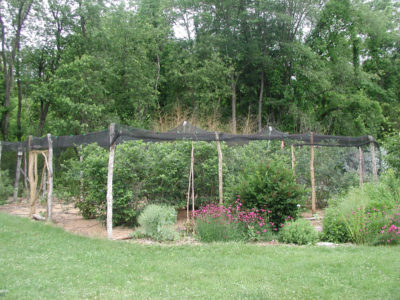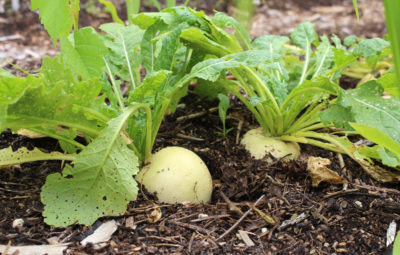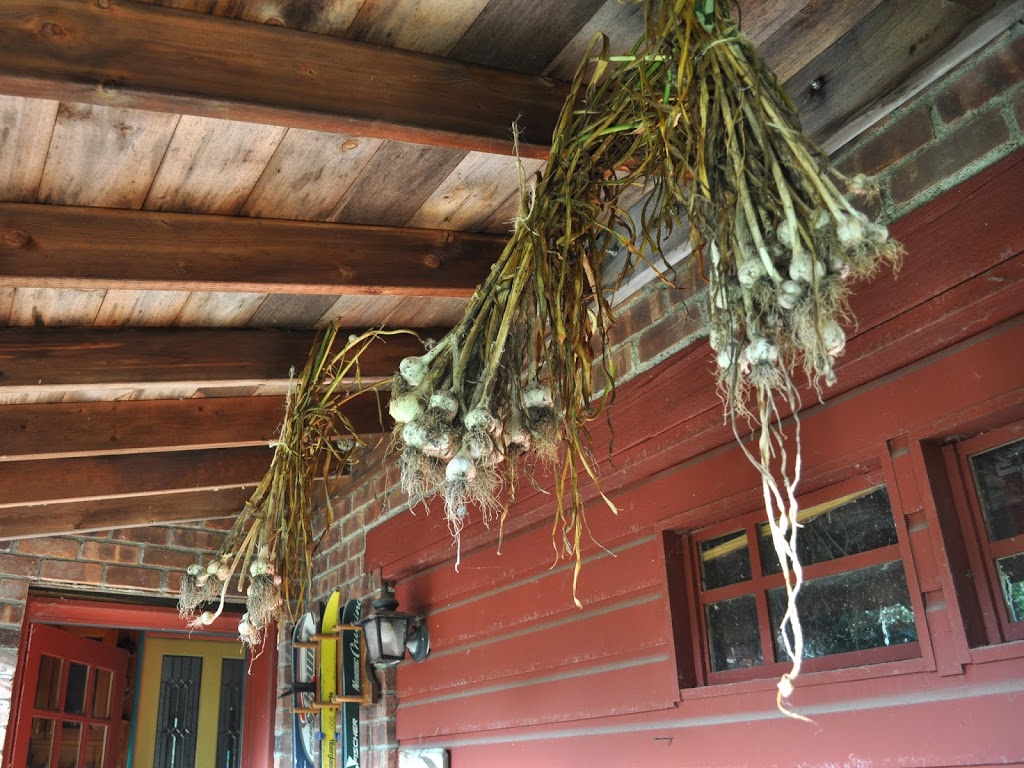TWO DELICIOUS ORBS, ONE BLUE & ONE WHITE
Soil is Key
Last week I described my foray into the New Jersey Pine Barrens, culminating in a visit to the USDA research station there to experience many new, interesting, and tasty varieties of blueberry. The soils of the Pine Barrens, as I wrote provide ideal conditions for the rather specific and unique requirements of this fruit.
That’s not to say that blueberries can’t be grown successfully beyond the Pine Barrens. In fact, they can be grown just about everywhere — if the right varieties are chosen and the soil is amended to suit the plants. The soil here at my farmden, for instance, is very different from that of the Pine Barrens. Mine is a naturally rich silt loam that is slightly acidic; the Pine Barrens are naturally poor sands that are very acidic.
Both soils are well-drained, which is the first requirement for a blueberry soil. The way to make soils that are less than perfectly drained suitable is to plant the bushes atop mounds or carry water away in ditches or in buried, perforated pipes.
Next, acidity. The pH for blueberries needs to be between 4 and 5.5, which is very acidic (and is what blueberry relatives such as rhododendrons and mountain laurels also demand). I acidifed my soil with elemental sulfur, a naturally mined mineral, before planting and do so periodically over the years, as needed. Many gardeners pile oak leaves or pine needles on their ground, or dig these materials into soil, to make a soil more acidic — that doesn’t do the trick; sulfur is what’s needed, 3/4 to 2 pounds per hundred square feet for sandy and clay soils, respectively, for each unit of pH change needed.
Blueberries like their roots coursing through soils that are high in organic materials, not rich organic materials such as manure or compost, though. Peat moss is good; I mixed a bucket full of peat with the soil in each planting hole when I planted. To maintain, even increase, levels of organic matter over the years, the ground beneath my bushes, every year, gets blanketed with a 3 inch depth of some weed-free organic material, such as autumn leaves, wood chips, wood shavings, sawdust, pine needles . . . whatever I can get my hands on.
And finally, blueberries need water, especially when young. That initial dose of peat moss along with yearly, organic mulches, helps the soil hold moisture (in addition to many other benefits).
Oh, one more thing: Ninety percent of blueberry roots are in the top 6 inches of soil. Hence their need for moisture. Those shallow roots also compete poorly with weeds. My 900 square foot of 16 blueberry plants is, essentially, a “no weed” zone, thanks to the mulch and occasional weeding.
Tastiest Turnips
Pushing open the gate to exit the blueberry planting, I walk over and pull open the gate to the vegetable garden. There lies a beautiful (to me) row of sweet, succulent turnips. Not just any old turnip, but the variety Hakurei, the best (to me, and many others gardeners and farmers).
Turnips are an underrated vegetable, perhaps because most that you can buy just don’t taste that good and because most that are grown in home gardens are not the best-flavored. The highest praise I know of for turnips is in the novel Tobacco Road, when Lov Bensey walks seven and a half miles to get a sack of winter turnips for fifty cents, which is half of his daily wage. (Admittedly, he was starving.)
So here’s at least the second written accolade for the turnip. When a good variety is planted and it is well grown, it is a sweet, flavorful vegetable excellent raw, pickled, or cooked. The variety to grow is Hakurei and the way to grow them is in rich, well-drained soil with a steady supply of moisture, the latter of which mine get automatically via drip irrigation.

Hakurei turnip
In the past I planted turnips only in late summer for a crop that ripened during the cool weather of autumn. This year I planted an early crop in the greenhouse; that crop was harvested and eaten by mid-June. I had plenty of seed and space in later in spring, so I planted some outdoors then. We’re still harvesting that crop and, despite the hot days, the flavor is excellent. (Cool nights might be helping to maintain flavor.)
Sometime in the next two weeks, I plan to sow seeds for fall harvest. Last year, that crop, harvested before the weather turned too bitterly cold and the soil froze, went into wooden boxes for cold storage, first just sitting outdoors, then carried into the garage, and, finally, carried down to the cool basement. The last of them, still tasty, were eaten March.



Given an unlimited supply of fall leaves, would you mulch your blueberries with shredded or un-shredded leaves? And what time of year would you apply them?
Unshredded. Not that shredded is bad, just that shredding is a waste of time and energy. I mulch after the blueberry leaves have fallen in autumn because that also covers any mummy berry infected fruits, preventing spread of the disease. I pretty much never see mummy berry in my planting.